- Category:
- Tag:
Applicable Business AreasAutomotive power module/inverter designers and manufacturers among OEMs (original equipment manufacturers), Tier 1 and Tier 2 suppliers
Target ApplicationsPower semiconductors for automotive devices
Applicable Business AreasAutomotive power module/inverter designers and manufacturers among OEMs (original equipment manufacturers), Tier 1 and Tier 2 suppliers
Target ApplicationsPower semiconductors for automotive devices

Highly efficient SiC (silicon carbide) power modules are becoming increasingly popular in electric vehicles (xEVs) for extending cruising range and improving fuel and electricity consumptions. A power module is composed of multiple power semiconductor chips mounted on a substrate in a package and a cooler bonded to a package.In addition to its high efficiency, SiC can be operated at high junction temperatures, enabling power modules with a higher output in smaller sizes. Making the most of SiC’s advantage, components of power modules, including die-bonding and bonding materials, are required to offer high heat resistance, heat dissipation and reliability.
Currently, bonding with sintered silver paste (hereinafter, “sintered silver”), instead of conventional high-lead solder, is applied to SiC die-bonding. Although its heat resistance and dissipation properties,there is a concern of its reliability to achieve the further smaller, and higher output modules.
Resonac proposes sintered copper paste (hereinafter, “sintered copper”) as a bonding material with superior heat resistance, heat dissipation, and reliability. Bonding with sintered copper enhances the reliability of SiC power modules while maintaining the same level of heat dissipation as sintered silver. Resonac has also developed sintered copper paste for large-area use, which is suitable for bonding between packages and coolers.
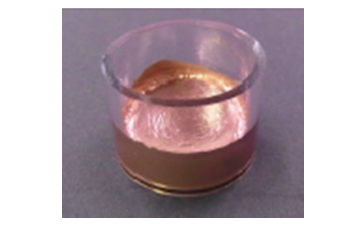
Sintered copper paste
Fatigue caused by the stress and strain tends to be accumulated in the die-bonding part with sintered silver, because silver, its main component, is soft and easily deformable. At power cycle tests, the repeated ON/OFF leads to stress accumulation in the die-bonding part and may result in fatigue destruction because of the differences in the coefficient of thermal expansion (CTE) among semiconductor chips, insulating substrates and die-bonding materials.
On the other hand, copper is known for its higher elasticity and yield stress, lower CTE than silver. Bonding with sintered copper, Resonac offers, allows superior reliability because of less thermal strain than sintered silver and less probable to fatigue failures due to its thermal strain being contained within the elastic deformation.
As bonding between packages and coolers, low thermal conductivity of conventional high-lead solder leads to a bottleneck in heat dissipation, while sintered silver remains a concern on reliability as more stress accumulation in the larger bonding area than the die-bonding part. To overcome these concerns, Resonac offers sintered copper paste optimized for large-area bonding. Resonac’s developing product allows thermal compression bonding at a lower pressure than the current sintered silver.
Resonac’s sintered copper paste contributes to the higher output and smaller size of SiC power modules, with its superior reliability demonstrating the same level of thermal conductivity as sintered silver.
A power cycle test at T j ,max = 175℃ reveals that sintered copper has a characteristic life approximately 40 times higher than high-lead solder, and approximately five times higher than sintered silver.
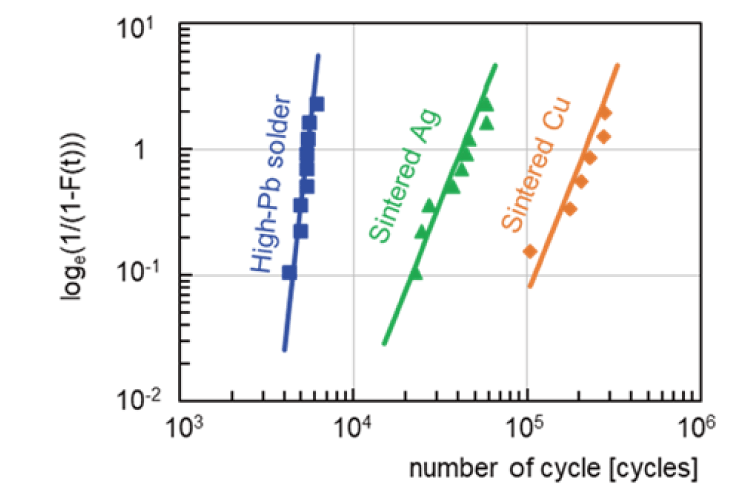

Below are temperature distribution diagrams comparing samples using sintered copper and high-lead solder as die-bonding materials. Bonding with sintered copper, whose thermal conductivity of 300W/(m・K) is equivalent to sintered silver, allows to dissipate heat from SiC modules to periphery and prevents local temperature of rising. On the other hand, bonding with high-lead solder with a thermal conductivity of 30W/(m・K) leads to a bottleneck of heat dissipation in the die-bonding part.
(a) Bonding with sintered copper
Heat is dissipated from chips to periphery, preventing local temperature of rising.
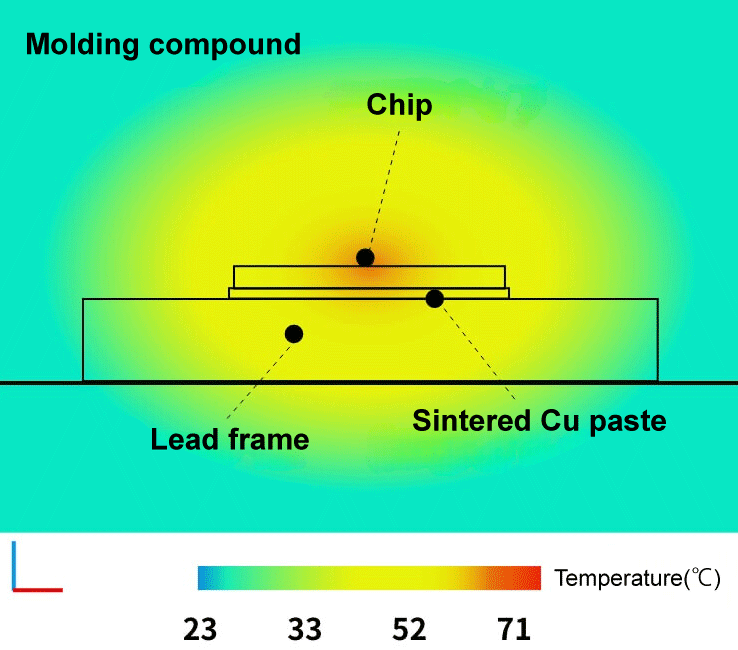
(b) Bonding with high-lead solder
Heat is not dissipated from chips, raising local temperatures.
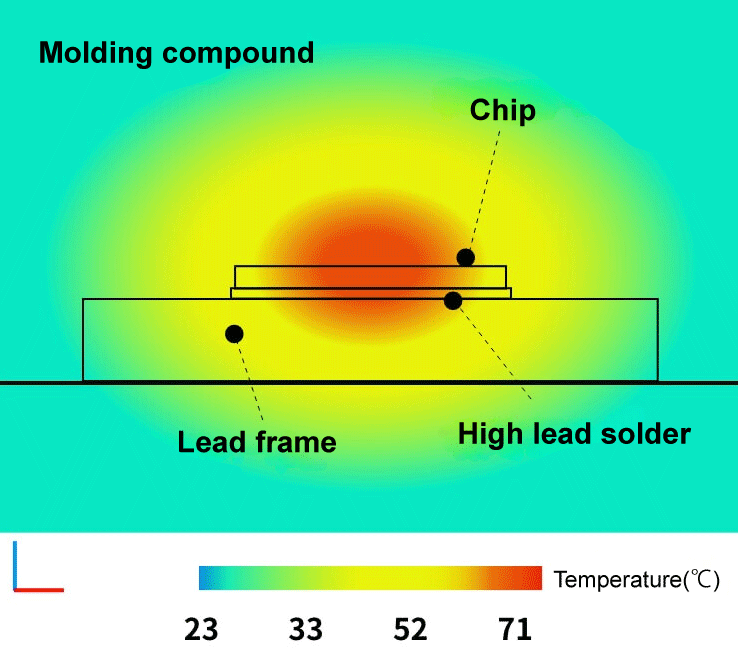
Resonac offers two types of developing products for die-bonding and large-area bonding, whose paste components are optimized to each bonding part.; As for die-bonding use, 5 mm to 13 mm squares, as for large-area 30 mm to 50 mm squares. For large-area bonding use, especially, sintered copper allows less total loads of thermo-compression at a lower pressure, enabling superior reliability than sintered silver.
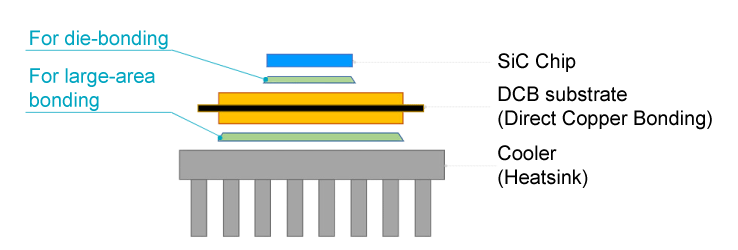
Update date: 6th March, 2024
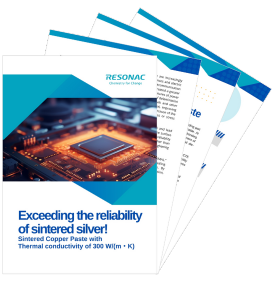
Contact Us
Please don't hesitate to contact us if you have any questions.